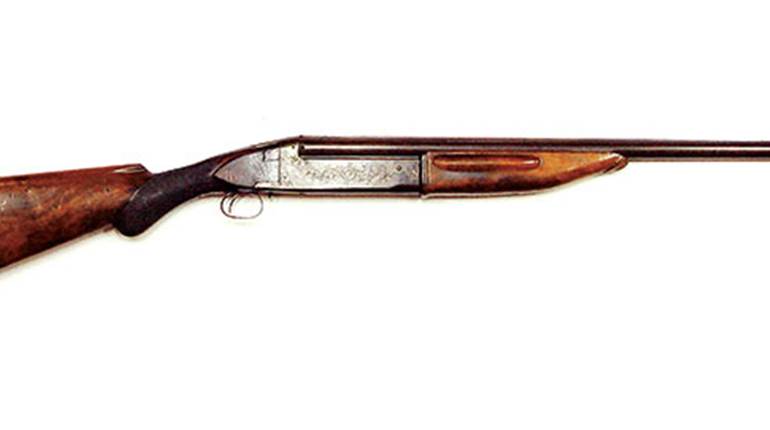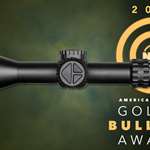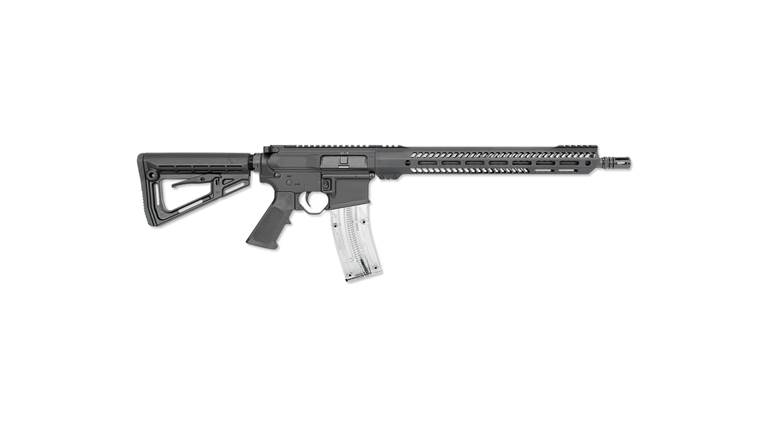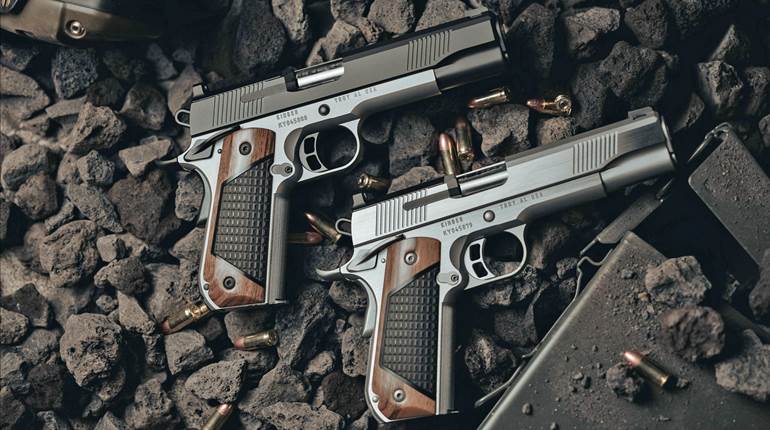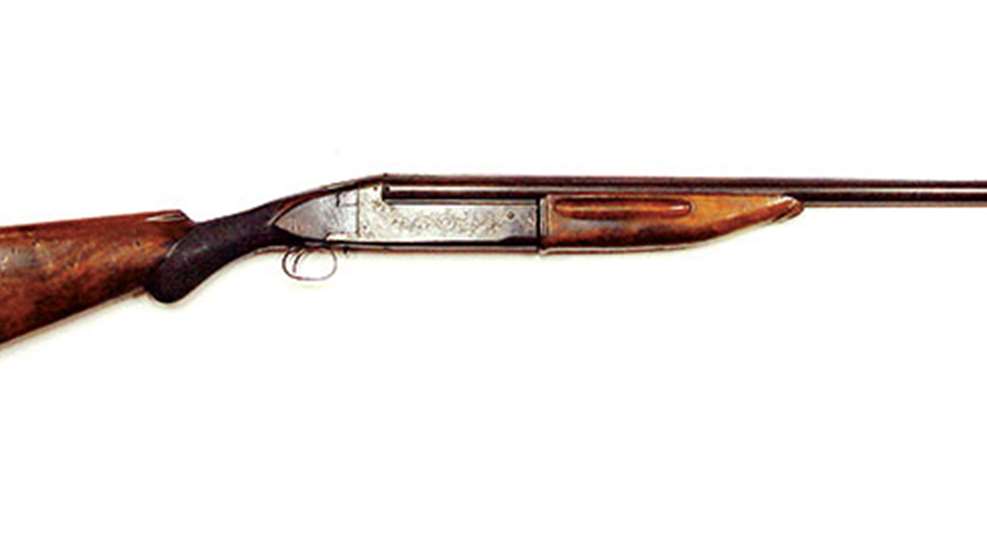
Q. My stepfather gave me a very unique 12-ga. shotgun, and I was hoping you could give me some more information about the manufacturer and the approximate date it was made. It appears to have been designed as a two-shot repeating trap gun. To open the action, the forearm and barrel assembly are pushed forward away from the breech. The action can only be opened after firing or when the action release located forward of the trigger guard is pulled back. When the action is opened, two extractors fixed to the right and left side of the breech hold the shell in position as the barrel moves forward until a spring-loaded ejector located under the firing pin forces the shell straight up after the case has cleared the chamber. As the barrel assembly continues forward, a shell carrier located in the bottom of the receiver lifts a new round up in line with the chamber. As the barrel is pulled back against the breech, the new shell is loaded. The carrier can be “locked out” for single-shot mode via a small latch on the bottom of the receiver. Few markings can be found on the gun, and they are in three lines of text arranged as follows:
PAT’D JUNE 18, 1901
1258
SEPT. 16, 1902
Someone told me that this gun was manufactured in the Lancaster, Ohio, area by a company called the “Young Gun Works” or something similar.
A. You have a very interesting shotgun. Indeed, it was made at the Young Gun Company by Charles “Sparrow” Young. Young was a distinguished trapshooter who ran the first ever 100-straight from 23 yds. at the Great American Handicap in 1926. He lived to a very old age, dying in his late 90s. He was considered one of the great shots of his day and was especially proud of his close friendship with Annie Oakley.
I believe that Young’s gun-making venture lasted only a very few years, but I don’t have any concrete information. The Amateur Trapshooting Association’s Museum [601 W. National Road, Vandalia, OH 45377; (937) 898-4638] probably has biographical information on Sparrow Young and perhaps some further information about his shotguns.
I have no idea how many shotguns Young produced, but it can’t be many. A friend says he’s seen three in his lifetime. The gun is unique and very clever, as were Young’s patents. As determined from your excellent photos, it appears to be in quite good condition. Nonetheless, I would be hesitant to fire it unless a really fine gunsmith checked it over. Since there are no parts available, it might be best not to fire the gun, regardless of its safety.
-John Taylor
Originally published October, 2006












